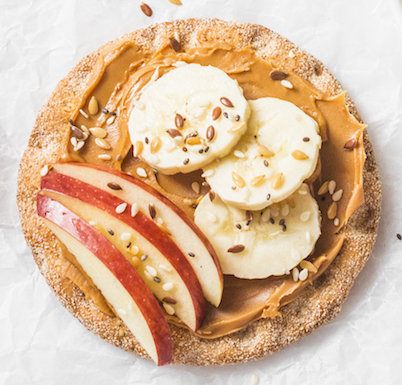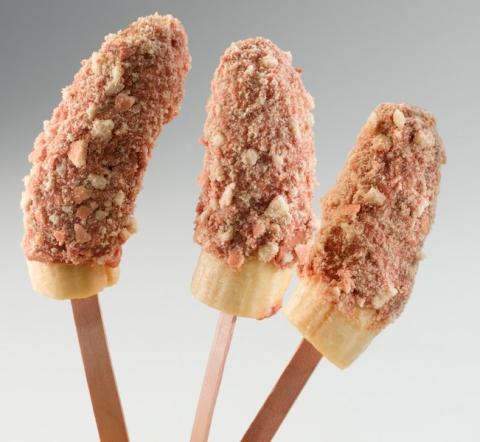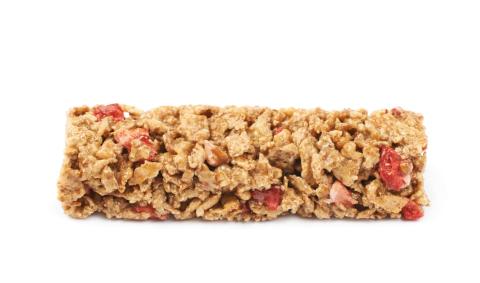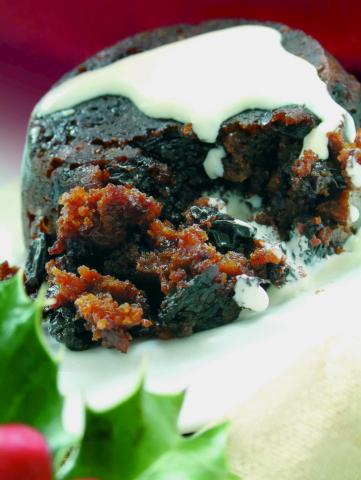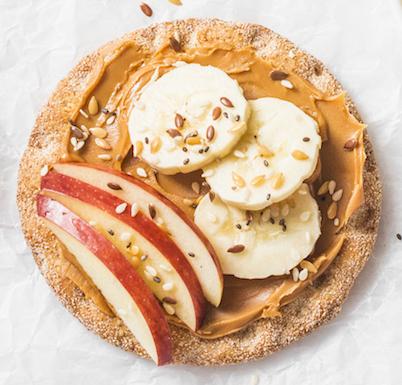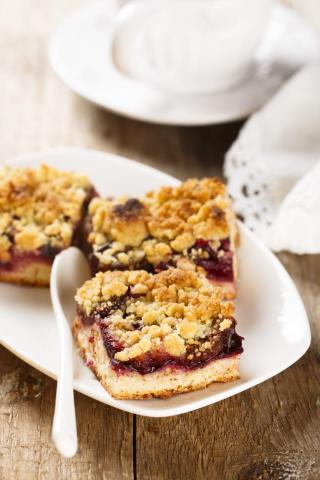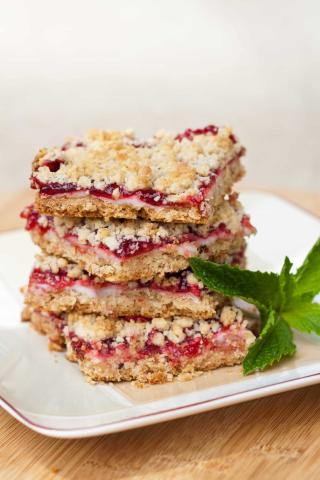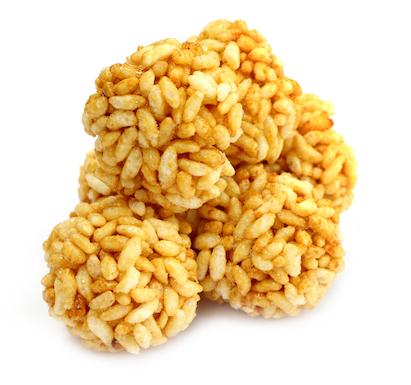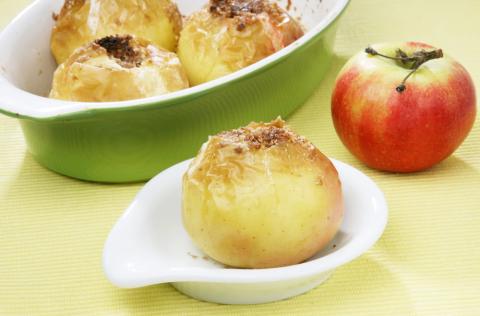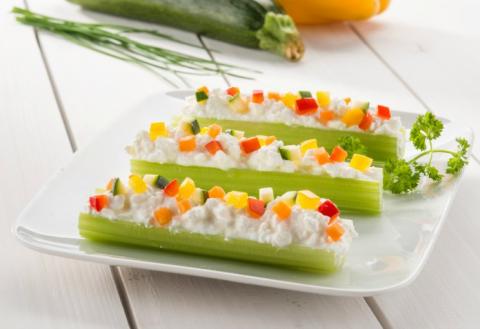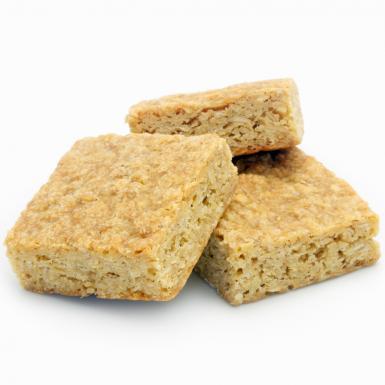- 4 (52g) Plain Oatcakes
- 4 (32g) Water Biscuits
- 5 Heaped teaspoons (80g) Peanut Butter
- 1 (100g) Banana
- 1 (112g) Apple
Ingredients
Allergy Disclaimer
Always check the label of each ingredient for allergy warnings.
Method
- Peel and slice the banana. Wash and slice the apple.
- Divide the peanut butter between the oatcakes and water biscuits and spread.
- Place the banana and apple slices onto each oatcake and water biscuit.
Time Saver Tips
Top with other fruit that you have in the house. Plain rice cakes could be used too.
Tips for Kids
This is a quick snack that they can help prepare. Use their favourite fruit as a topping.
Nutritional Information
Based on a single serving of 91g (% of an adult's reference intake)
Energy
242 kcals ( 12 %)
1,016 kJ ( 12 %)
Fat
3.2 g ( 16 %)
Saturates
24.4 g ( 10 %)
Sugar
9.4 g ( 10 %)
Salt
0.5 g ( 8 %)
Detailed nutritional information
| Per 100g | Per 91g serving | |
|---|---|---|
| Energy Kcals | 266 | 242 |
| Energy Kj | 1,117 | 1,016 |
| Protein | 7.6 g | 6.9 g |
| Total Fat | g | g |
| Saturated Fat | 3.5 g | 3.2 g |
| Carbohydrates | 26.8 g | 24.4 g |
| Total Sugars | 10.3 g | 9.4 g |
| NSP Fibre | 3.2 g | 2.9 g |
| Sodium | 225 mg | 205 mg |
| Salt | 0.6 g | 0.5 g |
Find out about nutritional labelling
Nutrition labels on the front of packaging
- Most of the big supermarkets and many food manufacturers display nutritional information on the front of pre-packed food.
- Front of pack nutrition labels provide information on the number of grams of fat, saturated fat, sugars and salt and the amount of energy (in kJ and kcal) in a serving or portion of a recipe.
- The labels also include information about reference intakes (expressed as a percentage) which are guidelines about the approximate amount of particular nutrients and energy required for a healthy diet.
- The colour coding tells you at a glance if the food has high (red), medium (amber) or low (green) amounts of fat, saturated fat, sugars and salt.
- The more greens on the label, the healthier the choice
- Amber means neither high nor low, so you can eat foods with all or mostly ambers on the label most of the time.
- Reds on the label means the food is high in that nutrient and these are the foods we should cut down on. Try to eat these foods less often and in small amounts.
Food shopping tips
If you’re trying to decide which product to choose, check to see if there's a nutrition label on the front of the pack. This will help you to quickly assess how your choices stack up. You will often find a mixture of red, amber and green colour coding for the nutrients. So when you're choosing between similar products, try to go for more greens and ambers and fewer reds if you want to make a healthier choice.
 Activities & Play
Activities & Play Behaviour
Behaviour Childcare
Childcare Development & Growing Up
Development & Growing Up Family, Friends & Relationships
Family, Friends & Relationships Feeding Your Baby
Feeding Your Baby Food & Eating
Food & Eating Health & Safety
Health & Safety Mental Health & Wellbeing
Mental Health & Wellbeing Money & Work
Money & Work Online Behaviour & Safety
Online Behaviour & Safety Pregnancy & First Days
Pregnancy & First Days School & Education
School & Education Sleep
Sleep

